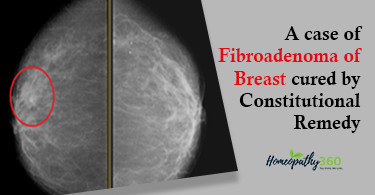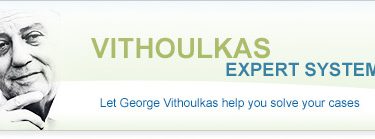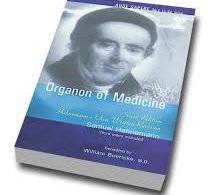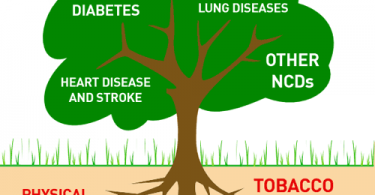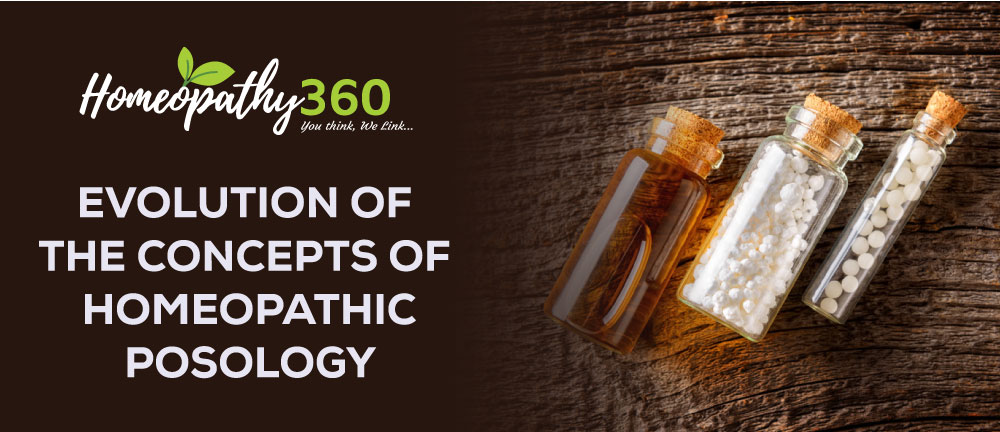
ABSTRACT:
Homoeopathy is a simple system of medicine, based on the use of potentized medicines following the law of similia, law of simplex and law of minimum. It is the science of determining and understanding of dosage. This article highlights the historical development and evolution of posology and unfolds the points as described by various stalwarts which has to be kept in mind while choosing potency and repetition.
KEYWORDS: Homoeopathy, posology, potentisation, repetition, susceptibility.
ABBREVIATION: C: centesimal potency; LM: 50 millesimal potency; MMP: Materia Medica Pura
INTRODUCTION:
Posology is the study of law of dosage. Dose is defined as the least quantity of substance required to affect a change in nature. The term “posology” originates from greek words ‘posos’ meaning ‘how much’ and ‘logos’ meaning ‘study’. A homoeopathic dose means the potency, quantity and form of medicine as well as repetition. Potentisation involves a series of systematic processes – succussions or trituration. In the words of Dr Stuart Close, “homoeopathic potentisation is a mathematico-mechanical process for the reduction, according to scale, of crude, inert or poisonous medical substances to a state of physical solubility, physiological assimilability and therapeutic activity and harmlessness, for use as homoeopathic healing remedies.”1,2
GENERAL LAWS APPLIED IN POSOLOGY:3
- The law of dosage: The law might be stated thus that the curative dose, like the remedy, must be similar in quantity and quality to the dose of the morbific agent, which caused the disease.
- The law of quantity and dose: The quantity of the drug required is in inverse ratio to the similarity.
- The law of quantity: The quantity of action necessary to effect any change in nature is the least possible. The decisive amount is always a minimum, an infinitesimal.
- The law of quality: The quality of the action of a homoeopathic remedy is determined by its quantity, in the inverse ratio.
- The law of use: The dose and quantity that will thoroughly permeate the organism and make its essential impress upon the vital force is that which will affect the functional sphere of the individual.
- The law of repetition (for proving): Never repeat the dose while symptoms are manifest from the dose already taken.
- The law of repetition (for cure): Never repeat your remedy so long as it continues to act.
TYPES OF DOSES:1,3
- Physiological dose: A dose of drug empirically selected of sufficient quantity and strength so as to produce predetermined effect or a group of symptoms. For e.g. physiological dose of belladonna is one which is sufficient to produce dilatation of pupil, dryness of mucus membrane, flushing and turgescence of skin. This is the quantity of medicine, which could be administered with safety.
- Pathological dose: Quantity of medicine capable of producing pathological change in the tissues of the organism, i.e. bio-chemical changes, biophysical changes.
- Toxic dose – Dose which produces toxic effects upon the organism.
- Lethal Dose – Dose which produces deleterious effect upon the organism even death.
- Therapeutic Dose – Least quantity of medicine required to effect a cure or palliation.
- Minimum Dose – Minimum dose which is otherwise known as the sub physiological or homoeopathic dose can be defined as the quantity of medicine required to produce a scarcely perceptible homoeopathic aggravation. According to Dr Stuart Close, minimum dose is a dose which is not capable of producing symptoms when use therapeutically. Minimum dose is also known as the infinitesimal dose.
EVOLUTION OF POTENTISATION:2,4,5,6
- 1786: No prevailing concept of potentisation. Hahnemann has mentioned in his work, “On the nature and treatment of Veneral Disease”, for very sensitive patients suffering from it, he used to prescribe 1 grain of soluble mercury, while others usually required 60 grains of soluble mercury.
- 1790: Cinchona bark was taken up by Master Hahnemann 4 drachms twice daily for experimentation after going through Cullen’s Materia Medica.
- 1796: In the “Essay on a New Principle”, Hahnemann introduced the concept of optimal dose.
- 1796-1797: No marked reduction in dosage of medicines seen. He prescribed 4grains of Veratrum album for colicodynia, 5 grains of Ipecacuanha and 4grains of Nux vomica for cases of asthma.
- 1798: Prescribed usual doses but has reduced the quantity in comparison to his other fellow-mates for preventing the violent action of remedy.
- 1799: For the first time he spoke about dilutions. The hint to this has been found in the translation of second part of Edinsberg Dispensatorium. During this period, Boerhaave used to prescribe Silver nitrate in doses of 2grains along with breadcrumbs and sugar, but Hahnemann considered this dosage to be too strong and advised for dilution. It is also mentioned in the “Apothecaries Lexion” – the use of Sabina in small doses; Hyoscyamus niger being prescribed in 0.001-0.002 gram of concentrated juice in solution; Stramonium given as 100th/1000th part of grain of concentrated juice.
- 1800: Arsenicum album prescribed as [1/10,000,000]th part of the original solution of remedy.
- 1801: First time detailed description about dilutions and its preparation was stated in his treatise on scarlet fever- here Belladonna in serial dilution of [1/24,000,00]th part was used as prophylactic. Mentioned about the process of succussion.
- 1802: Veratrum album was used in [1/2000]th part of a grain whereas Mezereum was used in [1/4,00,000]th part of a grain.
- 1805: Makes this discovery as foundation stone in the “Medicine of Experience”.
- 1812–1815: Prescribed Arnica montana in 18th and Nux vomica in 9th centesimal potency.
- 1816–1822: Started use of 30C potency in place of mother tinctures.
- 1825: Hahnemann says these are not mere dilutions but “dynamisation/ potentisation”.
- 1826: Described in MMP under Thuja occidentalis the entire process of trituration and succussion.
- 1827: Representing the potentisation process in his article, “ How can small doses of such very attenuated medicine as Homoeopathy employs still possess great power?”
- 1829: The idea had been incorporated as hints in ⸹278, 4th edition- footnote 2.
- 1829–1833: Started prescribing medicines in small doses of 1grain in 2C/ 3C but gradually increases potency- mentioned in Volume 1, Introduction of “The Chronic Diseases”. In the mean time he also embraced the use of olfaction method. Sniffing of single medicated globule of 30th potency.
- 1833: Finally incorporated succussion and trituration in ⸹269 of 5th edition of Organon of Medicine.
- 1838: “Dynamisation is not mere dilution”– mentioned in preface to 5th volume of The Chronic Diseases. Hahnemann’s earlier advice was to not repeat a dose due to fear of aggravation, but later he understood that this problem can be overcome by slightly increasing the power of the previous dose by potentisation.
- 1839-1843: Hahnemann saw that daily repetition is causing problem with weak and sensitive patients. Even after olfaction method, this problem was faced. This led to the invention of 1/50,000 dilution, i.e. LM potency.
FACTORS THAT LED HAHNEMANN TO ARRIVE AT THE CONCEPT OF MINIMUM DOSE:4
- Hahnemann observed that medicines exhibited greater strength when given in dilution than in dry state.
- He observed the greater power of medicine when given in divided dose than given at once.
- Hahnemann observed an increasing power of medicine by a thorough admixture of vehicle by means of succussion.
- Desire to evade prescription of apothecaries who tried legal proceedings against Hahnemann for invading upon their privileges for dispensing medicines.
- To avoid aggravation of disease when given in large doses.
SELECTION OF POTENCY AND DOSE:1
For determining the potency and dose
one should assess the susceptibility of
the patient. While assessing susceptibility one should bear in mind the
modifying factors like age, habits, environment, pathological conditions, seat,
character and intensity of disease and previous abuse of medicine.
Susceptibility can also be assessed by Jahr’s law.
- Age: Susceptibility is greatest in young vigorous persons and in children and it diminishes with age. Children are particularly sensitive during development and most sensitive organs are those, which are being developed. So children respond more to higher potencies.
- Constitution and temperament: High potencies are adapted to nervous, sanguine choleric temperament, to intelligent, intellectual persons, quick to act, and react and to zealous and impulsive patients. Lower potencies and more frequent dose correspond to torpid and phlegmatic individuals, coarse fibred, sluggish individuals of gross habits and to those of great muscular power who require powerful stimuli to excite them.
- Habit and environment: Susceptibility is increased by intellectual occupation, by long sleep and effeminate life. Therefore potencies are required for them. Persons exposed to continuous influence of drugs such as tobacco workers and dealers, distillers, brewers, all connected to liquor and tobacco trade, druggist, perfumes, chemical workers etc. are less susceptible and require low potencies. Idiots, imbeciles, deaf and dumb have low susceptibility hence require low potencies.
- Pathological conditions: In certain terminal conditions the power of organism to react even to indicate homoeopathic remedy is low so material doses will be needed. This may be due to existence of gross pathological lesions, long existent exhausting chronic disease or much previous treatment. If the grade of disease is low, the power of reaction is low; the remedy must be given in low potencies.
- Seat, character and intensity of diseases: In certain malignant rapidly fatal diseases like Cholera, the susceptibility is low, so it requires material doses or low potencies. Disease characterized by diminished vital activity, torpor, collapse and deficient vital reaction require low potencies and those with increased vital action require high potencies.
- Previous abuse of medicines: Due to this we may find that the patient is not at all sensitive even to the indicated remedy. Then all medication has to be ceased for few days. Then carefully regulate the diet and regimen. Hahnemann recommends the administration of opium in one of the lowest potencies every 8th or 12th hour until some signs of reaction are perceptible. By this means susceptibility is increased and new symptoms of disease are brought to light. Carbo vegetabilis, Laurocerasus, Sulphur and Thuja occidentalis are other remedies, which serve to arouse the organism to reaction so that indicated remedies will act.
Jahr’s Law: “The more similar the remedy, the more clearly and positively the symptoms of the patient, take on the peculiar and characteristic form of the remedy, the greater is the susceptibility to that remedy and higher is the potency required”.
Stuart Close modified Jahr’s advise by saying the clearer and more positive the finer, more peculiar and more characteristic symptoms of the remedy appear in a case the higher the degree of susceptibility and the higher the potency.
DIRECTIONS GIVEN BY VARIOUS STALWARTS:
- According to Stuart Close, there are three necessary requirements for the action of infinitesimal dose- “The development of special virtues of medicine by the process of potentisation”, “The increased susceptibility to medicinal impression produced by the disease” and“The selection of symptomatically similar remedy”.1
- Gordian Knot of Homoeopathy: Posology became a subject of much misunderstanding, discussion controversy in the earlier days of homoeopathy. On this subject the profession was divided into two opposing camps. Hahnemann at one time in despair of bringing his followers to an agreement proposed that one should treat all the cases with thirtieth potency. Later each person adopted the dosage according to his convictions. The materialistic minded restricted themselves to the crude tinctures and triturations of very low dilution ranging from 1x to 6x. Other ranged from 3 to 30 potency while some other small class inclined to metaphysical ideas, using only the highest potencies ranging from 200 to millionth. As physicians differed in their ideas this topic came to be regarded as the Gordian Knot to be cut by each individual as best as he could with the instruments at his disposal. Stuart Close has commented that this decision should be open to every practitioner and that each man should be competent, willing and ready to use any potency or preparation of indicated remedy. If he confines himself to one or two potencies, be they low medium or high he is limiting his own usefulness and depriving the patient of valuable means of relief andcure.1
- According to H.A.Roberts, the law of dosage could be summarized to 3 fundamental laws. (1) Law of least action and quantity. (2) Law of quantity and dose. (3) Law of quality. Infinitesimal dose is one, which is so small as not to produce too much aggravation of the symptoms already present and never large enough to produce new symptoms.3
- Nash was also strongly in favor of medium and high potencies.7
- Carroll Dunham in Science of Therapeutics says that the most vigorous opposition from old school as well as chief ground of division among the homoeopaths was upon the question of infinitesimal dose. He states in favor of infinitesimal dose and concludes that there are many evidences in chronic disease that many medicines have acted in very large doses.8
- Richard Hughes in his Pharmacodynamics says “My own experience of such dilutions as 6th and 12th and of the 30th is such as to make me join with unquestioning acclamation in their praise. I have no practical knowledge of the 200th, but if I had no other fact before me than their constant use by scientific and successful a physician as Carroll Dunham I should be content to acknowledge their legitimacy.” Richard Hughes has stated that he has nothing to say in favour of high potencies as we have no evidence that can be brought before us to prove that we actually develop power as we go on attenuating. Moreover, there is no material particle of the drug beyond 12C. Preparation of 1000th and beyond according to Hahnemann’s directions are simple impossibilities, for it will require lot of time, labour and cost.9
- James Tyler Kent in his lesser writings says that there is difference in the activities of a given remedy in the 30th and 10M upon the same constitution. Very high potencies seldom require repetition in chronic disease in severe acute disease several doses in quick succession needed. It is better to begin lower and go higher and higher. Medicines to be given in series of octave potencies. A deep acting chronic remedy should seldom be given in the midst of a paroxysm or exacerbations but at close of it.10
CONCLUSION:
Science has failed to explain Homoeopathy because it still lacks in the essentials to explain its process. Therefore homoeopathy remains enigmatic to the scientific community. The discovery of relativity theory and quantum theory in the 20th century ceased the classical concept of solid substances of Newtonian model. It was thus with the discovery of quantum theory, the interconnectedness of the dynamic universe and the nano-particles that modern physics has come to some strikingly similar conclusions that Hahnemann had already observed and said over more than 200 years earlier.
REFERENCES:
- Close S. The Genius of Homoeopathy- lectures and essays on homoeopathic philosophy. 11th Impression. Reprinted. New Delhi: B.Jain Publishers (P) Ltd. 2013.
- Hahnemann S. Organon of Medicine, translated from the 5th edition, with an appendix by R.E.Dudgeon with additions and alterations as per 6th edition translated by William Boericke, and Introduction by James Krauss. New Delhi. B.Jain Publishers (P) Ltd. 2013.
- Roberts HA. The Principles and Art of Cure by Homoeopathy. Reprinted. New Delhi: B.Jain Publishers (P) Ltd. 2014.
- Dudgeon RE. The Lesser Writings of Samuel Hahnemann. 14th Impression. Reprinted. New Delhi: B.Jain Publishers (P) Ltd. 2019.
- Hahnemann S. Materia Medica Pura. Vol-II. 20th Impression. Reprinted. New Delhi: B.Jain Publishers (P) Ltd. 2017.
- Hahnemann S. TheChronic Diseases Their Peculiar Nature andTheir Homoeopathic Cure. Vol-1. Reprinted. New Delhi: B.Jain Publishers (P) Ltd. 2014.
- Nash EB. Leaders in Homoeopathic Therapeutics With Grouping and Classification. Reprinted. New Delhi: B.Jain Publishers (P) Ltd. 2013.
- Dunham C. Homoeopathy the science of therapeutics. 1st edition. New Delhi: B.Jain Publishers (P) Ltd. 2007.
- Hughes R. The Principles and Practice of Homoeopathy. 15th Impression. New Delhi. B. Jain Publishers (P) Ltd. 2020.
- Kent JT. Lectures on Homoeopathic philosophy. 7th edition. New Delhi: B.Jain Publishers (P) Ltd. 2007.
ABOUT THE AUTHORS:
Dr Siddhartha Pal, M.D. (Hom.) National Institute of Homoeopathy, Kolkata; J.R.F., Dr. Anjali Chatterjee Regional Research Institute, Kolkata.
Dr S.Seetha Lakshmi, B.H.M.S; PG Scholar of Dept. of Organon of Medicine, National Institute of Homoeopathy, Kolkata.


